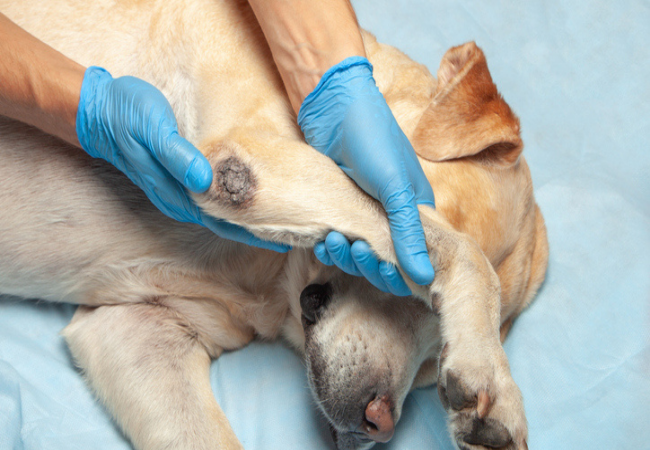Veterinary Guide to Elbow Dysplasia in Dogs 2025 🐶🩺

In this article
Veterinary Guide to Elbow Dysplasia in Dogs 2025🐶🩺
By Dr. Duncan Houston BVSc
🔍 Introduction
Elbow dysplasia is a common developmental orthopedic condition, especially in young, large-breed dogs. It causes front-leg lameness and pain, often leading to osteoarthritis. In this in‑depth 2025 guide, I’ll cover causes, symptoms, diagnosis, treatment, and long-term management to help owners navigate this condition. 🩺
💡 What Is Elbow Dysplasia?
Elbow dysplasia refers to abnormal development of the elbow joint—from genetic or growth-related issues—leading to uneven bone fit, stress fractures, and cartilage problems like:
- Fragmented medial coronoid process (FCP/FCM)
- Ununited anconeal process (UAP)
- Osteochondritis dissecans (OCD) of the medial humeral condyle
These defects create joint incongruence, driving inflammation and progressive osteoarthritis.
🐾 Common Breeds & Risk Factors
- Large to giant breeds: Labrador & Golden Retrievers, German Shepherds, Rottweilers, Bernese Mountain Dogs, Newfoundlands.
- Even small breeds like Pugs can be affected.
- Genetics play a major role—over 100 genes may be involved.
- Environmental contributors: rapid growth, obesity, high-impact exercise during puppyhood.
🚨 Signs & Symptoms
- Forelimb lameness—often worsens after exercise or prolonged rest, may manifest as head bobbing.
- Stiffness, reduced elbow motion, avoidance of walks or play.
- Joint swelling, warmth, grinding sensation (crepitus) during movement.
🔬 Diagnosis
- Orthopedic exam: detect pain on full flexion/extension, observe gait.
- X‑rays (flexed views) of both elbows to identify fragments, incongruities, arthritis.
- Advanced imaging: CT or arthroscopy to detect subtle lesions and guide treatment.
🛠 Treatment Options
1. Surgical Intervention
- Arthroscopy: removes fragments and smooths cartilage.
- UAP: fix early (<6 mo) via screw placement; advanced cases require excision.
- Osteotomies (e.g., PAUL, BODPUO) to realign joint biomechanics.
- Total elbow replacement is a salvage option for severe, end-stage disease.
2. Non‑Surgical Management
- Weight control and low-impact exercise (e.g., swimming, controlled walks).
- NSAIDs during flare-ups and joint supplements (glucosamine, omega-3s).
- Physiotherapy and hydrotherapy to strengthen muscles and improve joint flexibility.
📈 Prognosis & Aftercare
- Surgical cases often show rapid lameness improvement, but post-op osteoarthritis may still progress.
- Non-surgical cases require lifelong management, focusing on comfort and mobility.
- Follow-up with imaging and clinical exams to monitor arthritis and adjust care.
🛡 Prevention & Breeding Advice
- Don’t breed affected dogs—use OFA or BVA elbow scoring programs.
- Provide balanced diets tailored for large-breed puppies to slow growth.
- Maintain a healthy weight and avoid excessive repetitive joint stress during growth.
- Early screening—X-rays at 5–6 months can allow early intervention.
🔧 Tools & Services Recommendations
- Ask A Vet App: 24/7 veterinary support for pain assessment and treatment adjustments 📲
✅ Final Thoughts
Elbow dysplasia presents a lifelong orthopedic challenge, but with early diagnosis, tailored surgical or conservative care, and physiotherapy, many dogs live active, comfortable lives. Ongoing management of osteoarthritis is key. Partner with trusted services like AskAVet.com and tools like joint health through 2025 and beyond! 🐾❤️
Download the Ask A Vet app today to access professional advice for orthopedic care, rehab, and quality of life optimization. 🦴📱






